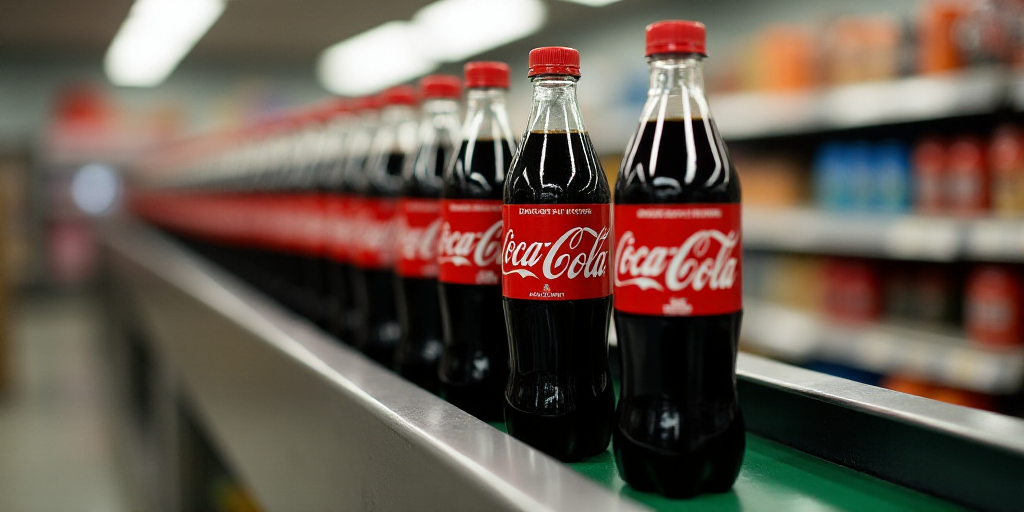Donald Trump’s Message Triggers a Ripple Effect in the Beverage Industry
On July 16, U.S. President Donald Trump posted on his Truth Social platform an unexpected statement:
“I’ve been talking to Coca-Cola about using cane sugar in Coca-Cola in the U.S., and they’ve agreed. It will be a very good decision on their part; you’ll see.”
The statement went viral, sparking alarm across the beverage and sweetener industries. Although Coca-Cola has not confirmed the change, they responded that they appreciate Trump’s enthusiasm and will soon share information about new offerings. The ambiguity has left room for speculation, but the domino effect is already underway.
Why Would This Be Such a Big Change?
Since the 1980s, Coca-Cola has used high fructose corn syrup (HFCS) in the U.S., an alternative to traditional sugar with economic advantages, high performance, and local availability. In contrast, in countries like Mexico, the formula uses cane sugar, creating a cult following for the “Mexican Coca” perceived to have a more authentic taste.
The potential return of sugar in the U.S. is not merely a technical decision; it would be a paradigm shift in formulation, global logistics, agricultural chains, and even trade diplomacy with cane-producing countries like Mexico, Brazil, or Guatemala.
Economic Impact: A Sweet but Costly Decision
According to Reuters calculations, switching from corn syrup to cane sugar would imply over $1 billion annually in additional raw material costs, potentially translating to a 50-cent increase per 355 ml can. This jump could put pressure on pricing strategies for both wholesale and retail.
Moreover, the corn refining sector has already reacted. The Corn Refiners Association warned that the change would be devastating for the U.S. agricultural industry:
“It costs thousands of jobs in the food industry, reduces agricultural income, and increases foreign sugar imports without any nutritional benefits.”
Mexico: Amidst T-MEC and Opportunity
The debate also involves Mexico, the primary exporter of sugar to the U.S., albeit with quotas and limiting tariffs. Under the USMCA, corn syrup enjoys free trade, while cane sugar faces barriers of 20% to 35% if export volumes exceed the allowed limit.
Currently, Mexico produces over 5.5 million tons of sugar annually, exporting about 15%, according to figures from the Agriculture Secretariat. A formula change in the U.S. could push for renegotiating export quotas or open a new trade window for Mexican sugar mills.
Perception and Health: The New Marketing
While both sweeteners are similar calorically, HFCS has faced numerous criticisms due to alleged health effects, including increased obesity, fatty liver, and metabolic diseases, according to Harvard School of Public Health studies.
On the other hand, cane sugar—considered “more natural”—has become attractive to young consumers seeking clean labels, free of “ultra-processed” ingredients. According to Innova Market Insights, 64% of U.S. millennials and Gen Z prefer products with recognizable, less industrial ingredients.
What’s Next?
For now, Coca-Cola remains silent. However, the market has already reacted. Futures sugar prices rose following the announcement, and both producers and bottlers are on alert.
If the most iconic global company opts to reformulate its star product in the largest market, the global beverage industry may be forced to reconsider its flavor, health, logistics, and sustainability standards.
Key Questions and Answers
- What is the proposed change? Coca-Cola is considering switching from high fructose corn syrup (HFCS) to cane sugar in the U.S.
- Why is this significant? It would be a paradigm shift in formulation, logistics, and trade diplomacy, impacting the agricultural industry and potentially raising product costs.
- What are the economic implications? The change could add over $1 billion annually in raw material costs, potentially increasing can prices by 50 cents.
- How does Mexico fit into this? As a major sugar exporter to the U.S., Mexico could see changes in export quotas or new trade opportunities under the USMCA.
- What are consumer perceptions? Cane sugar is seen as more natural, appealing to consumers seeking less industrial ingredients.
- What’s Coca-Cola’s response? The company has not confirmed the change but appreciates President Trump’s enthusiasm for the potential shift.






